Earlier this month, Nigel Leach, the head of the Puppet Department at Aardman Animations (Chicken Run, Wallace & Gromit, Shaun the Sheep Movie) came for a visit to the Properties and Objects department at NIDA during his trip to Australia.
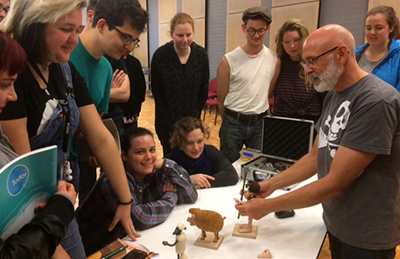
Head of Aardman Animation’s Puppet Department, Nigel Leach, with NIDA’s Bachelor of Fine Arts (Properties and Objects) and BFA/MFA (Design for Performance) students
Earlier this month, Nigel Leach, the head of the Puppet Department at Aardman Animations (Chicken Run, Wallace & Gromit, Shaun the Sheep Movie) came for a visit to the Properties and Objects department at NIDA during his trip to Australia. All the students of NIDA’s Bachelor of Fine Arts (Properties and Objects) and BFA/MFA (Design for Performance) were invited.
We talked to second-year BFA (Properties and Objects) student Ruby Marchese about what she gained from Nigel Leach’s demonstration and how it related to her course and her own interests, and her original path into the course.
Is Aardman Animations’ work something you’d been interested in already?
Ruby: I grew up watching Wallace & Gromit and Creature Comforts and Chicken Run. In terms of model-making and miniatures, I was introduced to that this year at NIDA when we did model-making as a subject, and I really, really enjoyed that. We also had to do industry research [as part of the course] and I’ve always been quite interested in Aardman as a company.
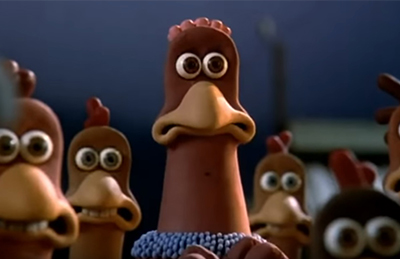 Still from Chicken Run trailer via Aardman Animation
Still from Chicken Run trailer via Aardman Animation
What did Nigel talk about?
He had this suitcase in which he’d brought some of the original puppets from Aardman. He had Shaun the Sheep, it was amazing� we all got to meet Shaun. He also had two puppets from their most recent film Early Man; the model-making in it was incredible. He had a model of Dug and Hognob, the warthog sidekick.
Was he talking about the process from design to construction, or the whole storytelling?
A bit of everything. He discussed how Nick Park, one of the directors, for a long time had the idea of a soccer match with cavemen that he wanted to bring to fruition. They worked with design concepts and concept artists on illustrations, and he had some examples of those, and from there, initial sketches and models of characters.
Nigel’s presentation focused on puppet-making, which is the characters themselves, but he took us through the whole creation process, and touched on animation.
 Still from Early Man trailer via Aardman Animation
Still from Early Man trailer via Aardman Animation
How are puppets different from models?
Nigel is Team Leader of the puppet department, but then there’s also an art department, which is the miniature scenery, objects and props� the space. Nigel’s department is the puppets, which are the characters in the film.
They aren’t your traditional kinds of puppets where you have a rod or a glove puppet, but they are puppets in the sense that they have parts that move and interchangeable heads or mouths, so that the animators can move them to do the stop motion.
How did his demonstration relate to course?
It was very relatable since my year-group had finished model-making a couple of months before. General moulding and casting is something we do a lot in our course as well, so that was super relevant.
However, what I found really interesting and helpful is seeing how they go through the thinking process� idea generation, development of the idea and then refinement. That [creative process] is something we go through innately in prop-making and it was interesting to see it outlined in a professional context.
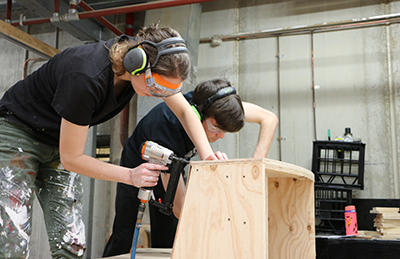 NIDA Bachelor of Fine Arts (Properties and Objects) students preparing for October productions, 2018
NIDA Bachelor of Fine Arts (Properties and Objects) students preparing for October productions, 2018
For someone interested in props, what was most interesting in the demonstration?
It’s really satisfying to see an artform that is so heavily based in props, objects and art. Often props take a backseat in films and theatre, so it’s wonderful to have an artform where they are in the spotlight.
It’s great for a company like Aardman, that’s so widely acclaimed, to focus on stop motion, miniatures, small puppet-making, moulding and casting. It’s so well-loved and so well-appreciated and that’s really satisfying as a maker; you see that your work has an impact and a purpose.
As an upcoming prop-maker it’s exciting and encouraging that you can go into props, learn all these different skills, and then come out potentially doing something amazing like working in stop motion films.
When you personally entered the course, was this the area you were interested in already?
I was straight out of high school so I had very few skills coming into the course, but I was open to anything and I just wanted to learn. I was definitely interested in smaller scale things, but I didn’t enter the course thinking, ‘I want to do model-making and I’m going to do stop-motion.’
The thing about model-making, too, is that it’s not just one skill. You learn so many things within it � puppetry, moulding and casting, scenic work, sculpture, digital modelling and CAD.
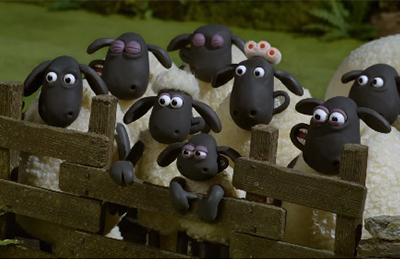 Still from Shaun the Sheep, via Aardman Animation
Still from Shaun the Sheep, via Aardman Animation
So how did your interest develop?
We did a massive sculpture at the start of the year, and then the very next project we did was model-making � so we went from making huge things to very little tiny things. I got a lot out of the large sculpture project, but then going into model-making, I immediately felt that I had an affinity with it. You enjoy some things more than others, and in the BFA (Properties and Objects) course you get to try your hand at different skills and projects, and find what you love most.
How much did you already know when you first applied for the BFA (Properties and Objects)? What would you say to someone who might feel intimidated about applying, perhaps imagining that other people in the course might be far ahead of them in terms of practical skills?
By no means should people be intimidated by what they don’t know. When I first applied for the course, I knew nothing. I literally didn’t know how to use a drill. I knew a little bit of sculpture, I’m a relatively good drawer, I could do technical drawing and I’d done quite a bit of graphic design, but it was a huge learning curve in improving my practical skills.
We had to make something for the application and in hindsight the object I made was not extremely well-constructed, but the idea was good and it was well-researched. And I think that’s what mattered. At the end of the day anyone can learn how to use a drill or a power tool or mould something, but to teach someone how to think is a lot harder, so you need to have ambition and you need to be a hard worker.
You have to know how to problem solve, how to communicate, how to work with others, and I believe those skills are just as important as the practical skills.
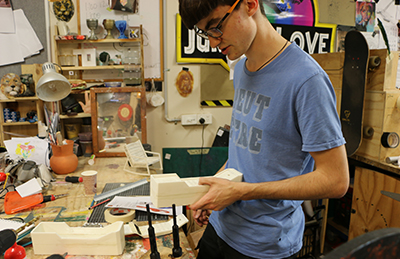
Bachelor of Fine Arts (Properties and Objects) student preparing for October productions, 2018
So the BFA (Properties & Objects) teaches you not only the skills but also how to problem solve, communicate and work with others?
You’re forced to collaborate every day because you work with four or five other people in the workshop. You’re constantly communicating, and we do the season production shows where you have to collaborate with people in order to get something larger done.
You have people coming up to you asking you how to do something, and you might not know how to do it but you try something and if that doesn’t work you try something else. That all comes with having learnt the skills; you’re more familiar with materials and techniques and therefore you can problem solve better, in conjunction with thinking creatively.
And there is so much collaboration. At the moment our class is doing a puppet show so we have to each make a puppet, each make a mask, then we have a story and we have to make the set for it together, and put together a show as a class. We also have to bring in other people � a director and some actors to help us out. So you’re constantly communicating with others, working together and collaborating with other people.
One of the messages I’ve gotten out of the course, too, is that it’s actually not always about the final product. It’s about the learning process in between. Your final object might not have turned out as well as you’d envisioned, but you learnt something through the making process� so if you were to do it again or do something similar you’d be more informed about how to approach it. So now is the time to make mistakes.
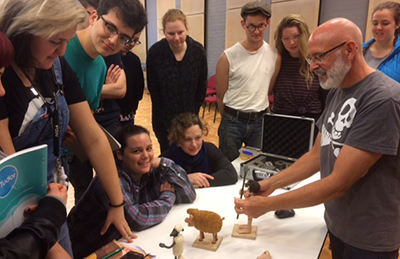
Head of Aardman Animation’s Puppet Department, Nigel Leach, with NIDA’s Bachelor of Fine Arts (Properties and Objects) and BFA/MFA (Design for Performance) students
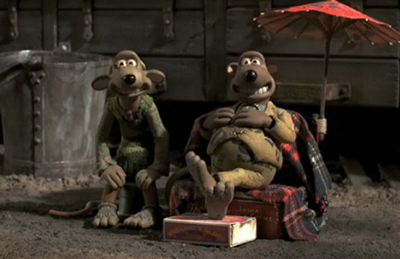
Still from Chicken Run Teaser via Aardman Animation
Applications for 2019 courses are now closed. For late application requests, please contact the Learning and Teaching Team at applications@nida.edu.au as soon as possible.
Express your interest for 2020 by registering here.

